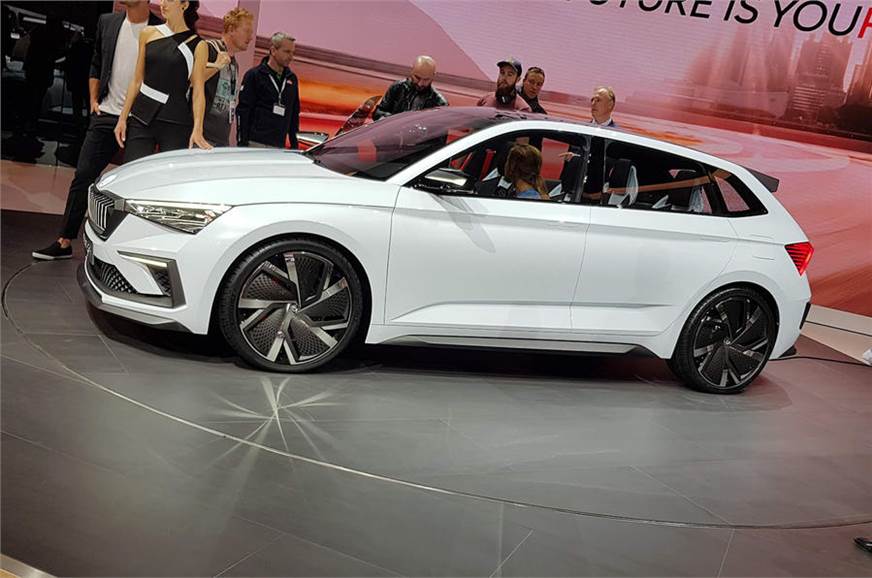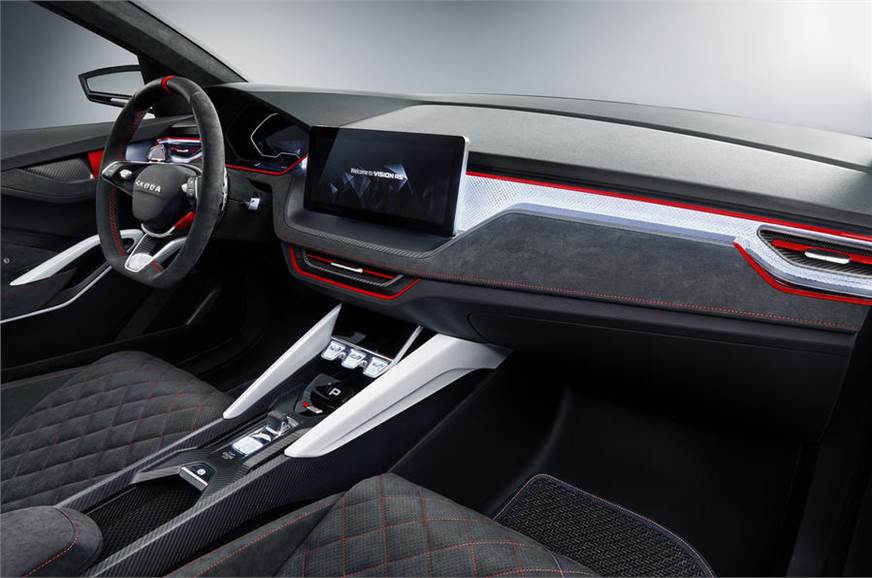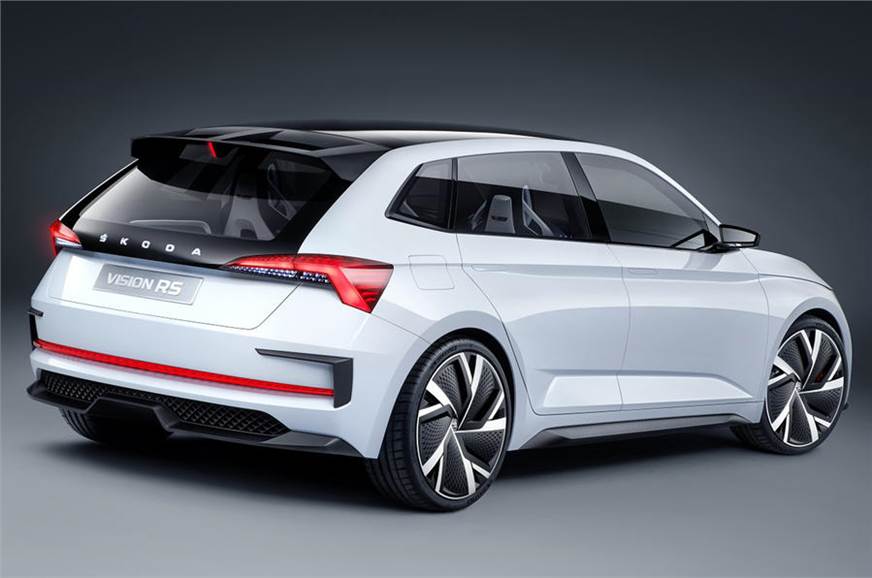Skoda has set the stage for its forthcoming Volkswagen Golf and Ford Focus rival with the Vision RS, a concept car that features a performance plug-in hybrid (PHEV) powertrain. Under the sporty details and concept flourishes, the Vision RS bears a close resemblance to the Rapid hatchback that will be introduced next year.

The fact that it has been previewed in vRS form, complete with 245hp PHEV powertrain, shows how much further upmarket the new Rapid will go compared with the current value-led model. Skoda product marketing chief Björn Kroll said: “The current Rapid is too low-market. For this one, we have tried to balance it out.”
Skoda will drop the slow-selling liftback version and concentrate on the Spaceback hatch for the new Rapid.

At 4,356mm, the concept is just over 50mm longer than the current Rapid, and it has a 440-litre boot that's up by 25 litres.
The concept retains some of the current Rapid’s design elements but Skoda interior design chief Oliver Stefani called the new model more emotional. He said: “This is more confident. We have brand-new curvature and nice shoulders, so it’s more beefy.”

The basic structure of the concept’s interior will be kept for the production version, Stefani said. That includes the 'signature line' of the dashboard, with a central dip which is where the free-floating touchscreen will sit.
The Rapid will be built on the VW Group’s MQB A0 platform that will also underpin the new small SUV (based on the Vision X concept) that Skoda will launch next year.
Skoda won’t put the Vision X’s four-wheel-drive hybrid drivetrain into production, but it almost certainly will launch the Rapid with the front-wheel-drive plug-in hybrid setup as previewed on the Vision RS. This combines a 150hp, 1.5-litre turbo petrol engine and a 102hp electric motor to give a total output of 245hp and a claimed 0-100kph time of 7.1sec.

The 13kWh battery will give a potential 69km electric range on the NEDC cycle. Other engine options are likely to include a 1.0-litre and a 1.5-litre turbo petrol unit, as well as a diesel model.
Why Skoda’s first electrified car will be a vRS:
What do you do if you’re a brand like Skoda, known for good-value, no-nonsense cars, but you’re forced to adopt expensive electrified tech to meet regulations?
Answer: you fit it to the vRS high-performance version, where the higher price can mask the extra cost. That’s why the Vision RS features a plug-in hybrid powertrain, and it’s a tempting prospect: 245hp, the satisfying feeling of driving a torquey electric car.
Skoda will launch 10 electrified cars by 2025. They won’t all be vRS badged, and Skoda has insisted they won’t all be crazy money. But by starting with a vRS model, Skoda can hide the costs and add desirability.
Comments
Post a Comment